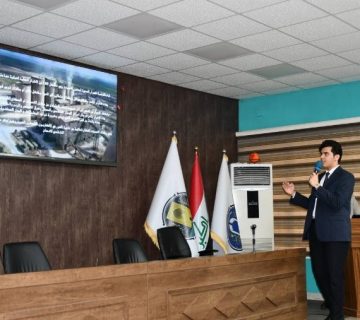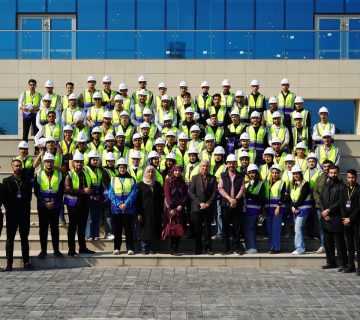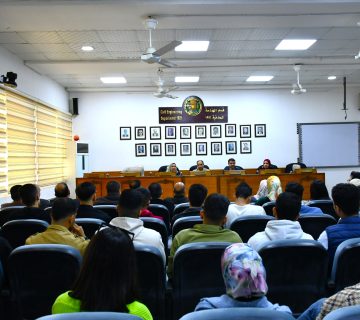التدريسي في قسم الهندسة المدنية الاستاذ سعد عيسى سرسم يشارك بصفته المتحدث الرئيس ويلقي بحثا بعنوان (التطورات الحديثة في نظام ادرة الصيانة للرصفة) في المؤتمر العالمي الثالث حول الهندسة والصيانة الذي عقد في جولين – الصين للمدة 18-20 من آب 2017.
RECENT TRENDS IN PAVEMENT MAINTENANCE MANAGEMENT SYSTEM
Prof. Saad Issa Sarsam
Head of the Department of Civil Engineering
College of Engineering, University of Baghdad, IRAQ
Email: [email protected]
Summary
Transportation is a major component of the economy, it provides links between businesses, industries and consumers and moreover, it affects the development of economy and social activities for the country. Reservation of the transportation network is generally governed by the limitations in the allocated budget for pavement maintenance works, the interferences in the process of decision-making between technical and administrative issues, and absence of the effective decision-making tools.
Maintenance plays an essential and integral part in the life of a pavement. The pavement maintenance management system (PMMS) is a systematic method for inspection and rating the pavement condition in a given area. The pavement maintenance management system is a set of tool that helps decision maker to determine optimum strategies for existing pavement condition by evaluation and maintenance of the pavement to reserve an acceptable serviceability for a desired period of time.
The system also performs a cost effectiveness analysis of various maintenance and rehabilitation strategies. Finally the system prioritize and recommend pavement rehabilitation and maintenance to maximize results within a given budget amount. During execution of maintenance activity, the system also tracks labour, materials, equipment, and cost for activities performed. The system also emphasizes economic use of personnel, equipment, and materials. The system implements visual or automated field inspection and rating of each street segment which is then entered into a database. The information is analysed using a software or expert idea, and provide recommendations and project future conditions. The pavement management system generates a deterioration curve for each segment based on input then assigns the most cost-effective maintenance strategy based on condition, surface type and functional classification, and available budget. The PMMS assist in applying the right treatment to the right pavement at the right time so that the expected service life of the pavement is extended as long as possible with acceptable cost.
The function of PMMS is to provide feedback data to improve the efficiency of decision-making. The system of PMMS need huge massive data to store in the database, then, through processing, the system will convert them into information. The information after processing is used in supporting the decision and planning.
There are two types of maintenance management system, the first one is the information system, which collects, organizes and stores data as network information. The second type is the decision-support systems, which comprises applications modules to process the data and provide the information on which decisions can be based, and ultimately, implemented. The system has four stages, planning; programming; preparation; and operations. The planning stage of the decision-support system is undertaken to develop long-term and strategic plans for the roadway network as a whole; planning time is typically of five years or more undertaken to determine future budget needs, consequential pavement conditions, and user costs.
Pavement management may be implemented at the project level and the network level. Network level management is concerned with the evaluation of all pavements under an agency’s responsibility. The main goal is to prepare an agency-wide prioritized pavement repair program that will yield the greatest benefit or least total cost under overall budget constraints. Also, it depends on more approximate data than project level management. Questions concerning short and long-range budget needs and the overall condition of the network (both current and future) are answered. In addition, network level management assists in prioritizing which pavement section should be rehabilitated, reconstructed or has maintenance performed on them. The level of inspection utilized in this type of evaluation is generally basic, consisting mainly of visual inspection of portion of surface of each of the pavement sections contained within the network. On the other hand, Project level management is concerned with a particular location and it usually comes after the analysis of network level in local agencies. Once a section has been identified for repair at the network level, then an engineering analysis is performed at the project level. A more detailed evaluation is required through this analysis, since the information collected at the network level does not normally contain the type of data required to make detailed decisions for an individual project design. During a project level analysis, additional testing such as visual inspection, non-destructive and coring testing are often conducted to give additional information about pavement condition and the cause of deterioration.









